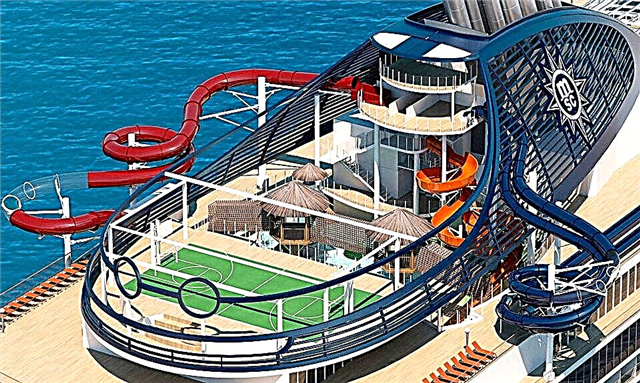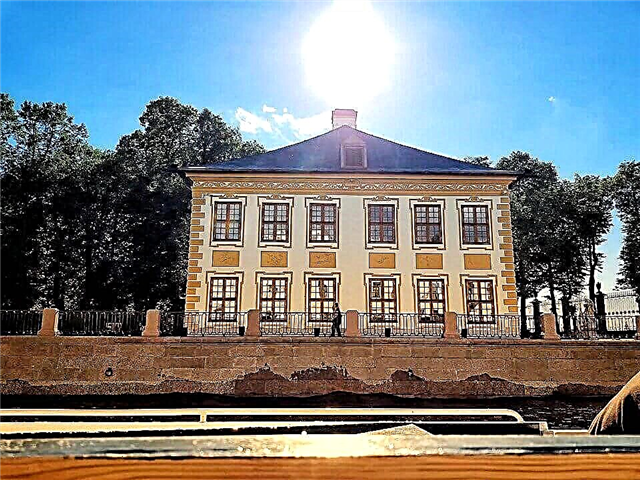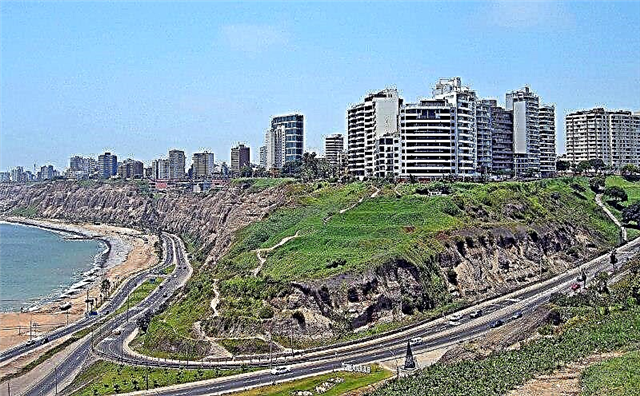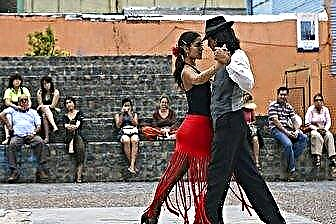Argentina is the fourth most visited country on the American continent. In 2010, 5.3 million tourists visited it. Such popularity is justified by a comfortable climate and a wide variety of interesting places.
Many tourists come to Buenos Aires. The city is European, but with its own South American charm. There are many museums, beautiful streets, well-developed infrastructure. Different areas of the city have a very varied atmosphere. The nature of Argentina has an incredible beauty. All areas of Patagonia are very popular.
Excursions are conducted in national parks, tourists come to go mountaineering or skiing. The beauty of the glaciers fascinates visitors and replenishes the country's budget well. In addition to the harsh ice in Argentina, there are rocky deserts with extraordinary reliefs and secrets. The Valley of the Moon with its stones has puzzled more than one scientist.
Argentina is very rich in archaeological sites. There are traces of the life of people who inhabited the earth 10 thousand years ago. The excavations found a huge number of dinosaur remains, which are now shown in the museum. Argentina is a distant country that is really worth going to. She can please everyone. The richness of nature, culture and history will surprise anyone who comes across them.

The best hotels and hotels at affordable prices.
from 500 rubles / day
What to see in Argentina?
The most interesting and beautiful places, photos and a short description.
Buenos Aires city
The Argentine capital is the most Europeanized city in South America. It was founded in 1536, later it was destroyed. New construction was completed in 1580. The city is located on the west bank of the Rio de la Plata. It is known for its historic neighborhoods with bustling trade, antique shops, cafes and restaurants. This is a modern metropolis with a lot of entertainment.

Iguazu Falls
The complex consists of 275 waterfalls on the Iguazu River. They belong to the Argentine and Brazilian national parks. The width of the complex is 2.7 km. The maximum height is 82 meters. The largest is the Devil's Throat waterfall. The width of its cliff is 150 meters, and the length is 700. Together, the waterfalls form a depression with a total area of 2.7 square meters. km. Iguazu have been named one of the seven natural wonders of the world.

Valdes Peninsula
This peninsula on the Atlantic coast of Argentina is called a continuous open-air zoo. Valdez is known for its fauna. It is home to ostriches, rhea, guanacos and mars. The coastal waters are inhabited by eared seals, southern elephant seals, southern whales, sea lions. Thousands of Magellan penguins live on a special farm. The island has salt lakes, reefs and rocks.

May pyramid in Buenos Aires
The May Pyramid is located in the central square of Buenos Aires. This is the country's first patriotic monument. It was opened on May 25, 1811 in honor of the first anniversary of the May Revolution. At the top of the pyramid is a statue - an allegory of Freedom in a Phrygian cap. Its height is 3.6 meters. The height of the entire monument is 18 meters. In the last century, the plaster that covered it was noticed on the marble.

Perito Moreno glacier
It is located in the Andes, on the Argentina-Chile border. It is one of three persistent glaciers in Patagonia. Its area is 250 sq. km, width 5 km, and average height 170 meters. Perito Moreno is the third largest freshwater reserve in the world. Periodically, it attacks Lake Argentino. The raised water breaks the ice dam and spills out. This spectacle is especially attractive for tourists. The glacier itself is very convenient for observation.

Cueva de las Manos cave
This is a cave in the province of Santa Cruz, in the valley of the Pinturas River. It was once home to the people who were the forerunners of Patagonia's hunters. The cave is famous for its human handprints applied to the walls with paint. Mostly this is the left palm of teenage boys. Probably, leaving an imprint was part of some kind of ritual. The oldest are 9 thousand years BC.

Theater Colon
The building that we see now was laid in 1889. Construction ended only in 1908 due to the deaths of the architects and the sponsor. The theater accommodated 2500 spectators, and up to 1000 people could listen to concerts while standing. In the foyer of the theater, there are busts of outstanding composers, and the interior is richly decorated. Tourists can take a tour of the theater, but it can cost more than a ticket to the show.

Talampaya Natural Park
It is a small but very interesting park in the province of La Rioja. Its area is 2 sq. On the territory of the park there is a canyon with red rocks on which drawings and pictograms remained. Trees grow from cracks in rocks, shrubs, flowers and cacti grow in oases and lawns. The favorite pastime of tourists in the canyon is to find a place where the echo is heard for several minutes and to shout different phrases.

Ischigualasto - Argentine Moon Valley
This valley in the province of La Riogia, which resembles the surface of the moon. Among its landscapes are many treasures for scientists. The remains of 54 species of dinosaurs, various reptiles, animals and plants were found on the territory of the national park. There is a museum in Moon Valley where you can see these exhibits. In the park there are rocks, lonely plants and round stones, the origin of which remains a mystery.

Los Glaciares National Park
The park is located in the province of Santa Cruz. Its area is 4459 sq. 30% of the park is covered with ice. There are 47 glaciers on its territory. Each part of the park has its own lake. It includes the largest lake in Argentina - Argentino, as well as the Perito Moreno glacier. Los Glaciares is home to over a hundred species of birds, llamas, Andean deer, cougars, and gray foxes.

Nahuel Huapi National Park
The oldest national park in Argentina was founded in 1934 in the area of Lake Nahuel Huapi. The park has a varied nature. There are rare plants on its territory. Tronador volcano is visible from any point of the park. Glaciers sliding down its slopes give rise to mountain lakes. The most famous of them is Frias. The main decoration of the park is the Nahuel Huapi lake. They say that the monster Nahuelito lives in the lake.

Patagonia
Patagonia is an amazing, unique world. It encompasses plains, fjords, mountain peaks and glaciers. The views of Patagonia are breathtaking. Next to the huge glaciers, it seems that the whole world has moved aside and is completely unimportant. The territory of Patagonia belongs to Chile and Argentina. Its economy is boosted by tourism and the sheep wool trade.

La Boca area
This is an area in Buenos Aires. The building of the city began with it. Once upon a time there was a port on its territory through which all goods were delivered to Argentina. La Boca also served as a place where barracks were built for black slaves. Today the area is famous for its artists, football team, carnivals and masquerades. It is also considered the birthplace of tango.

Andes
It is the longest mountain range in the world. It stretches across almost all of South America for 9000 km. In some places, the width of the mountains reaches 500 km. The Andes are located in several climatic zones, so their flora and fauna are very diverse. Llamas, spectacled bears, pudu deer and other animals live on their territory. The mountain slopes are covered with picturesque coniferous and pine forests.

Inca bridge
This is a bridge over the Mendoza River, created by nature from avalanches and rockfalls. It is 28 m wide, 48 m long, and 8 m thick. It is 27 m above the water. There is a village near the bridge. It houses a mountaineering museum as well as five geothermal springs. They are considered curative, there was even a resort near them. It was destroyed by an avalanche and now there is only one building left.

Casa Rosada
This is the name of the residence of the President of Argentina. It is located in the Plaza de Mayo in the heart of the capital. This is the place where the president works, but does not live. The construction of the palace began at the end of the 16th century. In subsequent years, it was completed and modified more than once. Tourists can visit the museums of the residence - Rivalavia's office, where the president works, the Busts Hall.

City of San Carlos de Bariloche
The city is located in the province of Rio Negro, at the very foot of the Andes. It is surrounded by beautiful lakes and mountains. Tourists who like active rest come here. The city is famous for its ski resorts, water sports, and mountain climbing. There are also many places with excellent views of the surrounding area.

Recoleta cemetery
This cemetery was built in 1732. During its existence, many famous Argentines were buried here. The most impressive thing in the cemetery is its gravestones. The abundance of crypts and monuments makes a huge impression. The funeral traditions of Argentines are very interesting and dark. The entrance to the cemetery is free.

Salinas Grandes salt marsh
Salinas Grandes is located in the northwest of Argentina. It is located in a tectonic depression between mountain ranges. Its area is 6 thousand square meters. This is the bottom of a dried-up lake. A railway and a highway are laid through its snow-white expanses. The temperature is high there and the climate is very dry. Mineral salts and soda are mined here. The salt marsh is the third largest in the world.

Tierra del Fuego (national park)
The park is located in the south of the Tierra del Fuego island. Its area is 630 sq. It is the southernmost national park on the planet. The Pan American Highway and Railroad ends on its territory. The landscapes of the park consist of lakes, islands, rivers and lagoons, and dense forests alternate with bushes. The harsh climate of this place is endured by red foxes, guanacos, emerald parrots, and condors.

Obelisk in Buenos Aires
This is a modern monument in the center of the capital on Republic Square. Its height is 67 meters. The obelisk was erected on the very spot where the Argentine flag was once hung for the first time. It was built in 1936 in just 4 weeks. The monument has become a venue for events and a city landmark for meetings and thematic gatherings.

Fitzroy
Fitzroy Summit is a mountain in Patagonia. Its height is 3375 meters. It is considered one of the most difficult climbs in the world. It attracts many climbers. The first ascent was made in 1952. The slopes of the mountain are almost vertical, but very beautiful. Excursions up the mountain are popular with tourists, but it is important to wait for good weather. The best time to visit Fitzroy is from December to February.

Bridge Women
This is the swing bridge in Buenos Aires, the work of the architect Santiago Calatrava. Its opening took place in 2001. The design of the bridge is reminiscent of a couple dancing tango. It got its name because of the large number of streets in the immediate area, named after women. The bridge itself is pedestrian, its length is 170 meters. It is divided into three sections, one of which can make way for ships.

Mendoza
The province is located in the west in the Cuyo region. Thanks to the sunny, dry climate, Mendoza has become a major wine region. Its 140 thousand hectares of vineyards are divided into five parts. The most interesting places in Mendoza are the ruins of the church of St. Francis, the park of St. Martin and museums. The city also hosts a harvest festival every year, which lasts three months.

Argentine tango
This is a pair dance that was originally performed by men. Its creators were the lower classes of the population of Buenos Aires. The rise of the dance takes place in the 1930-1950s. The meaning of the dance lies in the "communication" of partners, their passion and merging into one whole. Argentine tango has four components: step, turn, stop and decoration. There are many styles of this dance.












